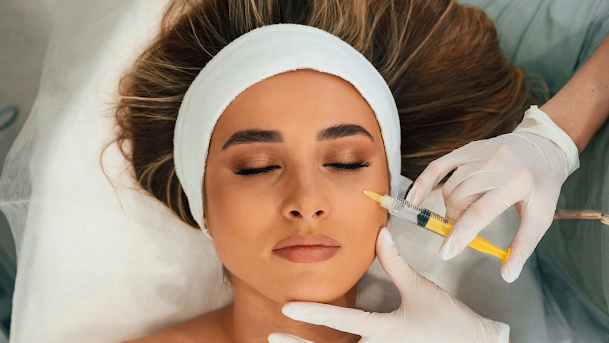How Does PRP Hair Treatment Boost Hair Growth?
Hair loss is a widespread concern that affects millions of individuals worldwide. Whether caused by genetics, hormonal imbalances, stress, or environmental factors, hair thinning can impact self-confidence and overall well-being. In recent years, medical advancements have introduced Platelet-Rich Plasma (PRP) therapy as an effective, non-surgical solution to promote hair growth. This innovative procedure harnesses the body's natural healing abilities to rejuvenate hair follicles and stimulate new growth. But how exactly does PRP hair treatment work to enhance hair regrowth? Let’s delve into the science behind it.
PRP Hair Treatment in Dubai has gained significant popularity due to its natural and minimally invasive approach. Unlike traditional hair restoration procedures, PRP therapy does not involve synthetic drugs or major surgical interventions, making it a safer alternative with minimal side effects.
Understanding PRP Therapy for Hair Growth
PRP therapy is a regenerative treatment that utilizes the patient’s own blood to stimulate hair follicles. The process begins with a simple blood draw, followed by centrifugation to separate platelet-rich plasma from other blood components. The resulting PRP, which is rich in growth factors, is then injected into the scalp to activate dormant follicles and encourage new hair growth.
The Science Behind PRP Hair Restoration
To understand how PRP therapy promotes hair growth, it is essential to examine the role of platelets and growth factors in tissue repair and regeneration. Platelets are specialized blood cells responsible for healing wounds, clotting, and cellular regeneration. When concentrated into PRP, these platelets release essential growth factors, including:
Platelet-Derived Growth Factor (PDGF): Stimulates cell growth and division, crucial for follicle regeneration.
Vascular Endothelial Growth Factor (VEGF): Enhances blood vessel formation, ensuring better nutrient and oxygen supply to hair follicles.
Transforming Growth Factor-Beta (TGF-β): Supports tissue repair and reduces inflammation.
Insulin-Like Growth Factor-1 (IGF-1): Encourages follicle survival and extends the hair growth phase.
These growth factors work synergistically to activate dormant hair follicles, improve circulation, and strengthen existing hair strands. As a result, individuals experience increased hair density, reduced shedding, and healthier scalp conditions.
The PRP Treatment Process: Step-by-Step Guide
PRP hair treatment follows a straightforward and minimally invasive procedure. Below is a step-by-step breakdown of how the therapy is administered:
Blood Collection
A small sample of the patient’s blood is drawn, typically from the arm, similar to a routine blood test.
Centrifugation Process
The collected blood is placed in a centrifuge, a device that spins at high speeds to separate plasma from red blood cells. This process isolates the PRP, which contains a high concentration of platelets and growth factors.
Activation of PRP
In some cases, an activating agent such as calcium chloride or thrombin is added to enhance platelet activation and optimize its regenerative properties.
Injection into the Scalp
The PRP is carefully injected into targeted areas of the scalp where hair thinning or baldness is evident. The injections are administered using fine needles to ensure precision and minimal discomfort.
Post-Treatment Care
After the procedure, patients are advised to avoid excessive sun exposure, hair styling products, and intense physical activities for a few days to maximize the effectiveness of the treatment.
Benefits of PRP Hair Treatment
PRP therapy has been widely recognized for its numerous benefits in hair restoration. Some of the key advantages include:
Natural Stimulation of Hair Growth: Since PRP is derived from the patient’s own blood, the risk of allergic reactions or rejection is minimal.
Improved Hair Density and Thickness: Regular PRP sessions help enhance hair volume and prevent further hair loss.
Safe and Minimally Invasive: The procedure does not require surgery, making it a safer alternative to hair transplants.
Reduced Inflammation and Scalp Irritation: PRP contains anti-inflammatory properties that promote scalp health and reduce conditions like dandruff and itching.
Minimal Downtime: Patients can resume their daily activities shortly after the treatment with minimal restrictions.
How PRP Therapy Works Over Time
PRP hair treatment is not a one-time solution but rather a progressive therapy that requires consistency for optimal results. Here is a general timeline of how PRP works over different stages:
First Few Weeks: Initial healing takes place, and some patients may notice reduced hair shedding.
Three to Six Months: Noticeable improvement in hair thickness and strength, with reduced hair fall.
Six to Twelve Months: Significant hair regrowth and enhanced scalp coverage.
Ongoing Maintenance: Periodic PRP sessions (typically every 6-12 months) are recommended to maintain long-term results.
Who Can Benefit from PRP Hair Treatment?
PRP therapy is suitable for various individuals experiencing hair thinning or hair loss. It is particularly beneficial for:
Individuals with Early-Stage Hair Loss: PRP is most effective when administered in the early stages of hair thinning.
Men and Women with Androgenetic Alopecia: Also known as male or female pattern baldness, this genetic condition responds well to PRP therapy.
Patients Seeking a Natural Alternative to Medication: Those who prefer a drug-free solution to hair restoration can benefit from PRP.
Post-Hair Transplant Patients: PRP can enhance the success rate of hair transplants by promoting faster healing and follicle survival.
Factors Affecting the Success of PRP Therapy
While PRP therapy is highly effective, several factors can influence its success, including:
Patient’s Age and Hair Condition: Younger individuals with mild hair thinning tend to respond better to PRP.
Consistency of Treatment: Multiple sessions are usually required for noticeable results.
Underlying Health Conditions: Medical conditions such as thyroid disorders or autoimmune diseases may affect hair growth.
Lifestyle and Diet: A nutrient-rich diet and a healthy lifestyle can enhance the benefits of PRP therapy.
Conclusion
PRP hair treatment is an innovative and scientifically backed approach to hair restoration. By utilizing the body’s natural healing mechanisms, PRP therapy stimulates hair follicles, promotes new hair growth, and improves overall scalp health. With its minimally invasive nature and promising results, PRP has emerged as a revolutionary solution for individuals struggling with hair loss.




Comments
Post a Comment